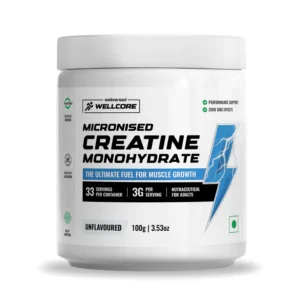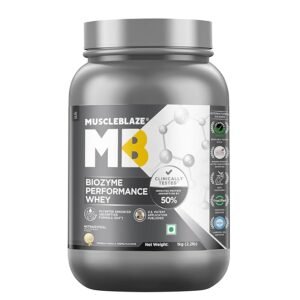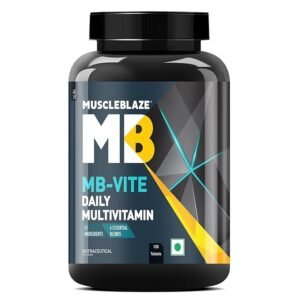Your Journey to Wellness Starts Here – Fitness Programs that Fit Your Goals

Weight Training
Weight training is a strength-focused workout method that uses resistance to build muscle, improve endurance, and boost overall fitness. By engaging various muscle groups through exercises like squats, deadlifts, presses, and curls, weight training not only increases strength but also supports bone density, improves metabolic rate, and promotes better posture and balance. Whether using free weights, machines, or body resistance, weight training can be tailored to all fitness levels, helping individuals to progressively achieve their goals, from muscle toning and fat loss to enhanced athletic performance. Embrace weight training to sculpt, strengthen, and empower your body for lasting results.

Cardiovascular
cardiovascular exercise, is a form of physical activity designed to elevate the heart rate and boost overall cardiovascular health. Through exercises like running, cycling, swimming, and high-intensity interval training (HIIT), cardio improves heart and lung function, burns calories, and aids in weight management. Regular cardio training enhances endurance, reduces stress, and helps regulate blood pressure, making it a cornerstone of a balanced fitness routine. Suitable for all fitness levels, cardio can be tailored in intensity and duration to meet individual goals, helping you build stamina, increase energy, and support long-term heart health.

Core
Core training focuses on strengthening the muscles in your midsection, including the abdominals, obliques, and lower back. This type of exercise goes beyond just achieving a toned appearance—it’s essential for stability, balance, and overall functional movement. A strong core supports nearly every physical activity, helping to improve posture, reduce back pain, and prevent injuries. Core workouts include a variety of exercises such as planks, crunches, leg raises, and rotational movements, which can be adjusted to suit any fitness level. By incorporating core training into your routine, you'll build a solid foundation that enhances performance in both everyday tasks and athletic activities.

Strength Training
Strength training is a form of exercise designed to increase muscle strength, power, and endurance by applying resistance to specific muscle groups. Through exercises like squats, lunges, bench presses, and rows, strength training helps build lean muscle mass, boosts metabolism, and improves bone density, which is crucial for long-term health. This type of training uses free weights, machines, or body weight to challenge muscles, gradually increasing resistance over time to promote muscle growth and resilience. Suitable for all fitness levels, strength training can be adapted to personal goals, from toning and conditioning to maximizing athletic performance and functional strength. It's not only about building muscles but also about enhancing overall health, energy, and confidence.
MuscleBlaze MB-Vite Daily Multivitamin (120 Tablets) | With 51 Ingredients & 6 Blends | Vitamins & Minerals, Prebiotic & Probiotics, Amino Acid Blends | For Energy, Stamina & Recovery

- Select options This product has multiple variants. The options may be chosen on the product page
Wellcore - Micronised Creatine Monohydrate

Wellcore - Micronised Creatine Monohydrate (100g, 33 Servings)

Muscleblaze Biozyme Performance Whey Protein (1 Kg | Chocolate Hazelnut)

Understanding Muscle Recovery
Muscle recovery is a fundamental process following physical exertion, essential for the repair and growth of muscle tissues that experience strain during exercise. During this period, several physiological changes occur. Initially, microtears in muscle fibers caused by intense workouts initiate a cascade of cellular responses. The body kicks off the repair process by sending specialized cells to the damaged areas, which helps regenerate and heal the tissue. This healing phase is crucial, as it not only restores muscle function but also leads to muscle hypertrophy, enhancing strength and performance.
Additionally, muscle recovery involves the replenishment of energy stores. After strenuous activities, the body depletes glycogen reserves, which must be restored during recovery. The consumption of carbohydrates and protein is vital in this phase, as they provide the necessary building blocks for muscle repair and energy restoration. Nutrition plays a significant role in optimizing muscle recovery; an adequate intake of essential amino acids can promote protein synthesis and muscle growth, while hydration is equally important to maintain cellular functions and reduce fatigue.
Various factors can influence muscle recovery. These include the intensity and duration of the exercise, individual fitness levels, and overall health conditions. Notably, sleep is a critical aspect of this process that is often overlooked. While the body repairs itself during rest, adequate sleep is necessary to facilitate hormonal balance, including increased growth hormone levels, which are integral to muscle repair and growth. Thus, understanding and optimizing muscle recovery is paramount for athletes and fitness enthusiasts aiming to enhance their performance and minimize the risk of injury. The interplay of nutrition, hydration, and sufficient rest, particularly sleep, underscores the comprehensive approach required for effective muscle recovery.
The Science of Sleep: How It Affects Muscle Repair
Sleep is an essential component of overall health, playing a critical role in muscle recovery and repair. It is during sleep that the body engages in various processes vital for maintaining physical performance and ensuring recovery from training or injuries. The sleep cycle consists of multiple stages, primarily categorized into Non-Rapid Eye Movement (NREM) sleep and Rapid Eye Movement (REM) sleep, each serving distinct functions essential for muscle repair.
During the NREM phase, particularly deep sleep, the body exhibits heightened levels of growth hormone release. This hormone is crucial for tissue repair, muscle recovery, and overall anabolic processes. Research indicates that deep sleep facilitates the regeneration of muscle fibers that are stressed during exercise, effectively enhancing muscle strength and growth. Furthermore, deep sleep contributes to metabolic functions that help to maintain healthy muscle tissue.
On the other hand, REM sleep, which coincides with dreaming, has been shown to support cognitive processes and emotional well-being. Despite its indirect role in muscle recovery, optimal REM sleep is necessary for adequate energy levels, focus, and motivation for physical activity. This stage is also associated with the release of testosterone, another hormone integral to muscle building and repair. Testosterone not only supports muscle growth but also aids in the recovery process by minimizing muscle breakdown.
However, insufficient sleep significantly hampers these recovery mechanisms, leading to increased fatigue and diminished athletic performance. A lack of adequate sleep can result in elevated cortisol levels, a hormone known to hinder muscle tissue repair and promote muscle loss. Hence, ensuring sufficient sleep is vital for athletes and fitness enthusiasts aiming to optimize their muscle recovery and overall performance. Researchers recommend aiming for seven to nine hours of quality sleep to allow for the complete cycle of recovery processes to occur.
How Many Hours of Sleep Do You Need for Optimal Recovery?
Sleep is a crucial component for muscle recovery, particularly for those engaged in regular physical activity. The general consensus among sleep experts and health organizations suggests that most adults require between 7 to 9 hours of sleep each night. However, this requirement can vary based on several factors, including age, activity level, and personal recovery needs.
Athletes, in particular, may have heightened sleep needs due to the increased physical stress they place on their bodies. Research indicates that elite athletes may benefit from 9 to 10 hours of sleep. This additional rest allows their bodies to repair and build muscle tissue, replenish energy stores, and enhance overall performance. Similarly, individuals participating in intense recreational sports often find that 8 to 10 hours of sleep helps mitigate fatigue and improves recovery outcomes.
Conversely, the average person typically requires fewer hours of sleep compared to an athlete, but they should still aim for at least 7 hours to support overall health and recovery. As individuals age, their sleep needs may decrease slightly, but quality remains essential. Older adults might find that their total sleep time does not always reflect their need for restorative sleep. Cultivating consistent sleep patterns can significantly enhance recovery, irrespective of activity levels.
To assess personal sleep requirements, individuals can track their sleep duration and overall daily energy levels through the week. Keeping a sleep diary may reveal patterns that indicate whether the current amount of sleep is sufficient. Furthermore, prioritizing a supportive sleep environment and establishing a nightly routine can also aid in improving sleep quality, ultimately leading to better muscle recovery and performance over time.
Strategies to Improve Sleep Quality for Better Recovery
To optimize muscle recovery, enhancing sleep quality is crucial. By adopting certain strategies, individuals can significantly improve their rest and recuperation processes, ultimately supporting their fitness goals. One of the most effective ways to promote better sleep is by implementing proper sleep hygiene practices. This involves establishing a calming bedtime routine that signals the body it is time to wind down. Consider activities such as reading a book, taking a warm bath, or practicing gentle stretches. These calming practices can help transition the mind and body into a restful state.
Another essential strategy is maintaining a consistent sleep schedule. Going to bed and waking up at the same time each day can help regulate the body's internal clock, resulting in improved sleep quality. This regularity encourages the body to enter deeper sleep stages, which are vital for muscle recovery. Additionally, it is important to avoid irregular sleep patterns, such as staying up late on weekends, which can disrupt the body's circadian rhythm.
Creating an optimal sleep environment can further enhance sleep quality. Consider factors such as room temperature, noise levels, and light exposure. A cool, dark, and quiet space is ideal for sleep. Investing in blackout curtains or eye masks and using white noise machines or earplugs can minimize disturbances. Furthermore, the importance of proper nutrition cannot be overstated. Consuming foods rich in magnesium, such as nuts and leafy greens, or those high in carbohydrates can facilitate better sleep. Lastly, incorporating relaxation techniques such as meditation or deep-breathing exercises within the evening routine can significantly reduce tension and stress, making it easier to fall asleep.
In summary, employing these strategies—sleep hygiene, consistent bedtimes, an optimal sleep environment, and mindful nutrition—can greatly improve sleep quality, enhancing muscle recovery. By making these changes, individuals can ensure they are well-rested and ready to face their next workout with vigor.